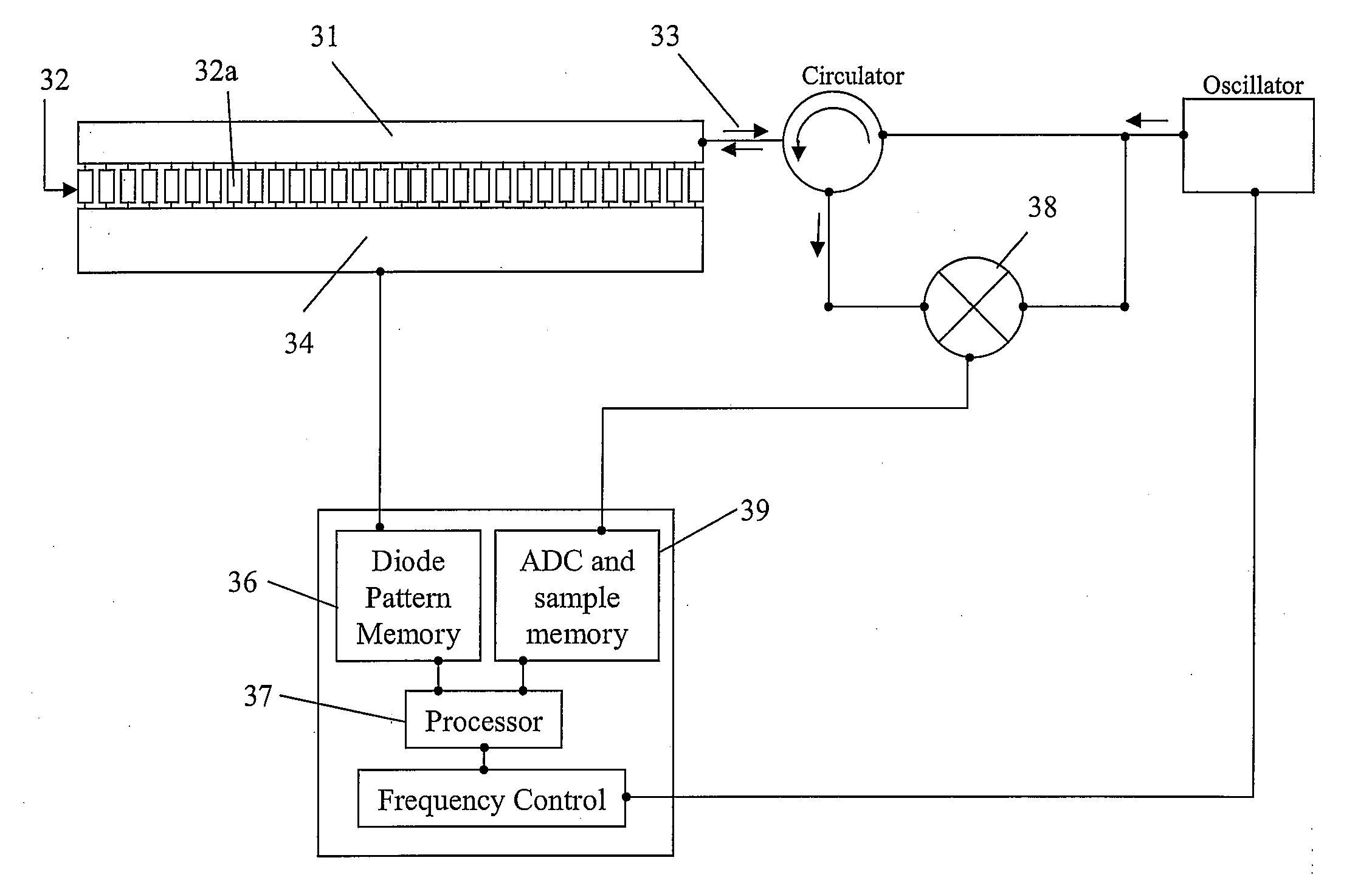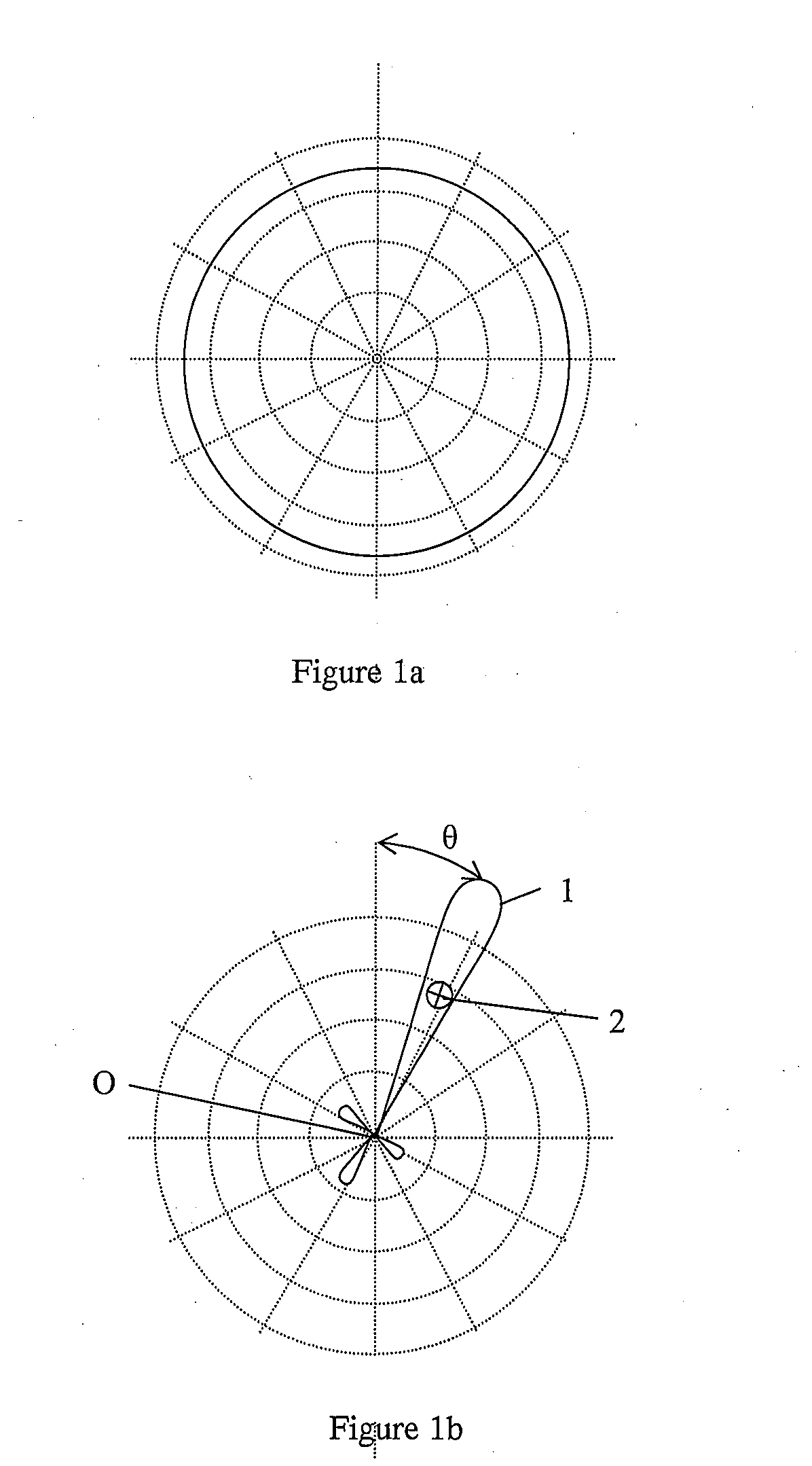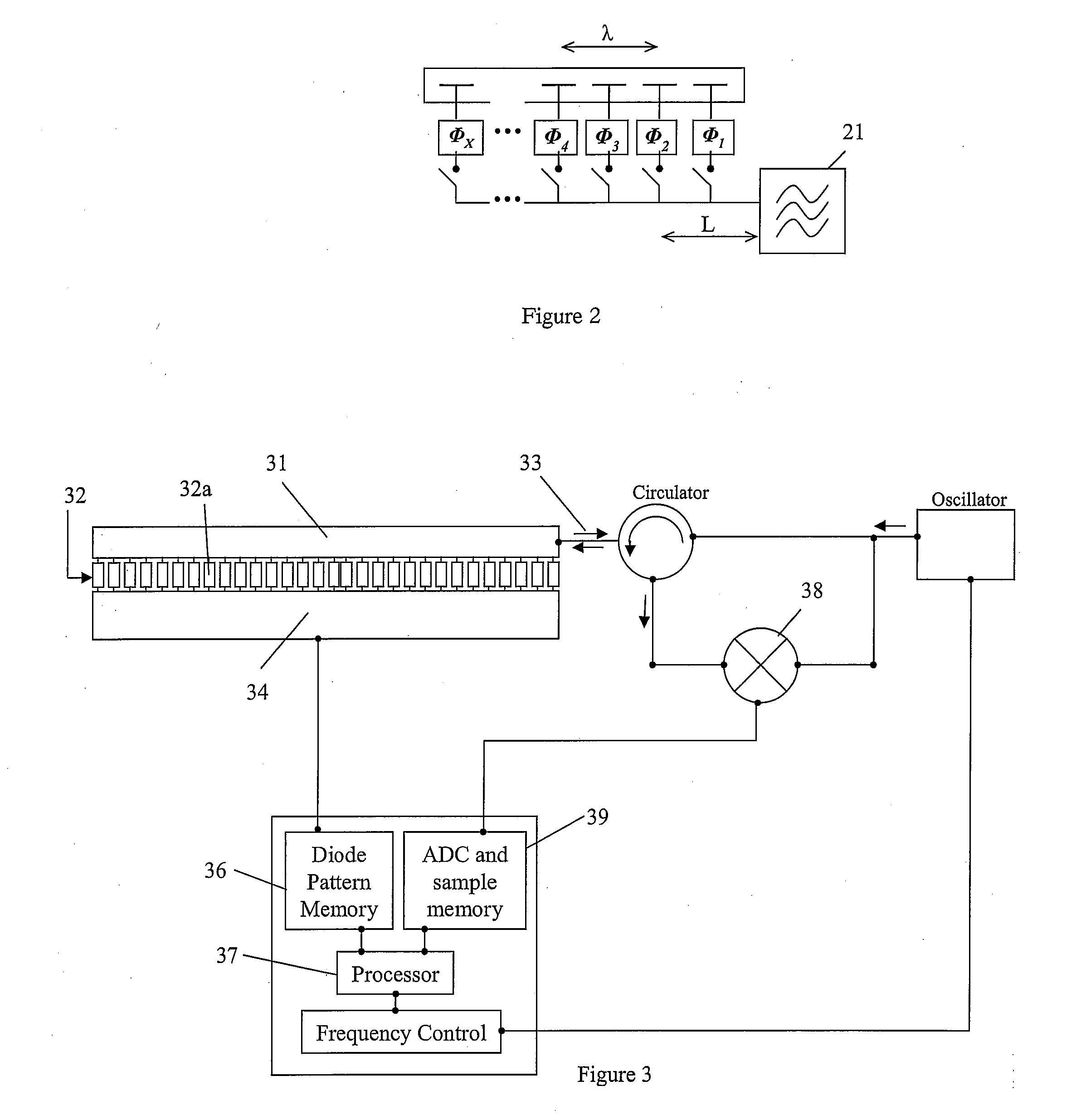Antennas
a technology of antenna array and antenna array, which is applied in the direction of direction finders using radio waves, instruments, and reradiation, etc., can solve the problems of inability to analyze inability to use the measurement method based on the time of flight, and high cost of radar and other problems, to achieve the effect of improving the usefulness of the apparatus
- Summary
- Abstract
- Description
- Claims
- Application Information
AI Technical Summary
Benefits of technology
Problems solved by technology
Method used
Image
Examples
Embodiment Construction
[0045]Shown in FIG. 3 is a mono-static phased array, at its heart is a rod 31 like element which functions as a waveguide of the kind disclosed in U.S. Pat. No. 5,982,334. Coupled to the rod 31 is a switching means 32 which can be conceptually considered to comprise a set of switches. Each switch can be operated between a high gain “on” state and “off” state. In the on state, the switch causes a region of the rod to permit radiation to escape from the rod 31 by evanescent switching. This region is referred to as an antenna element within this application, and because it can be turned on or off by the switch it can be considered to be an active antenna element. The switching means 32 co-operates with the rod 31 in such a manner that a series of these evanescent coupling regions are defined along the length of the rod 31 to form a configurable linear antenna array.
[0046]The switching means 32 comprises a semi-conductive slab with a plasma grating, as taught in U.S. Pat. No. 5,982,334 ...
PUM
 Login to View More
Login to View More Abstract
Description
Claims
Application Information
 Login to View More
Login to View More - R&D
- Intellectual Property
- Life Sciences
- Materials
- Tech Scout
- Unparalleled Data Quality
- Higher Quality Content
- 60% Fewer Hallucinations
Browse by: Latest US Patents, China's latest patents, Technical Efficacy Thesaurus, Application Domain, Technology Topic, Popular Technical Reports.
© 2025 PatSnap. All rights reserved.Legal|Privacy policy|Modern Slavery Act Transparency Statement|Sitemap|About US| Contact US: help@patsnap.com



